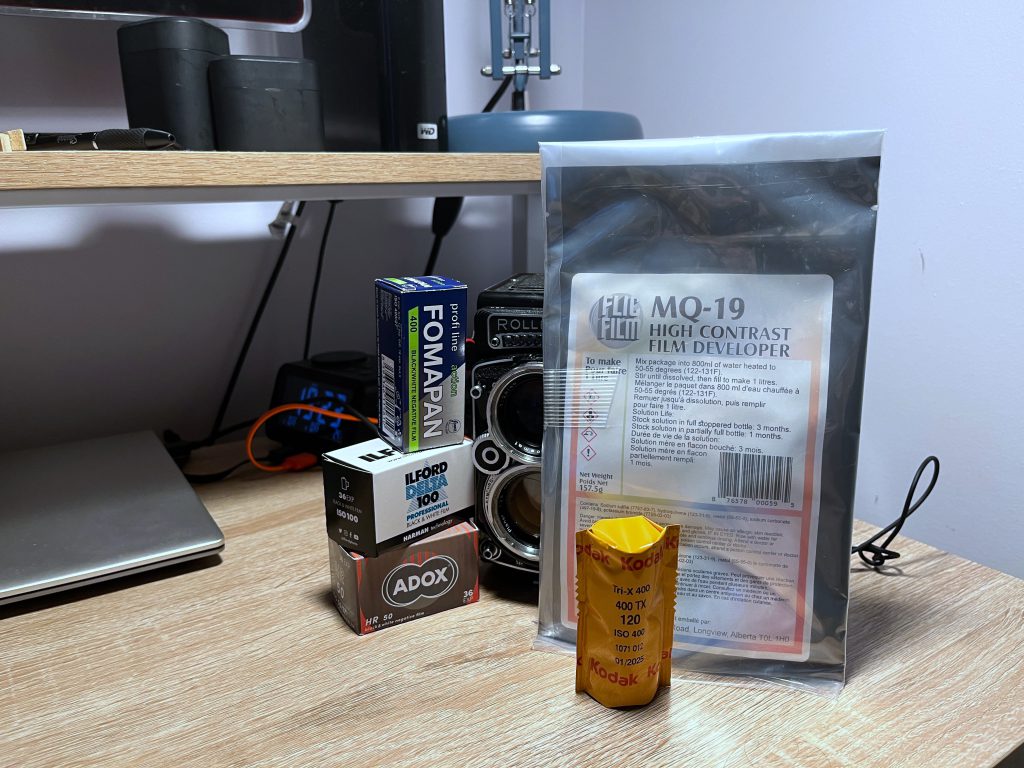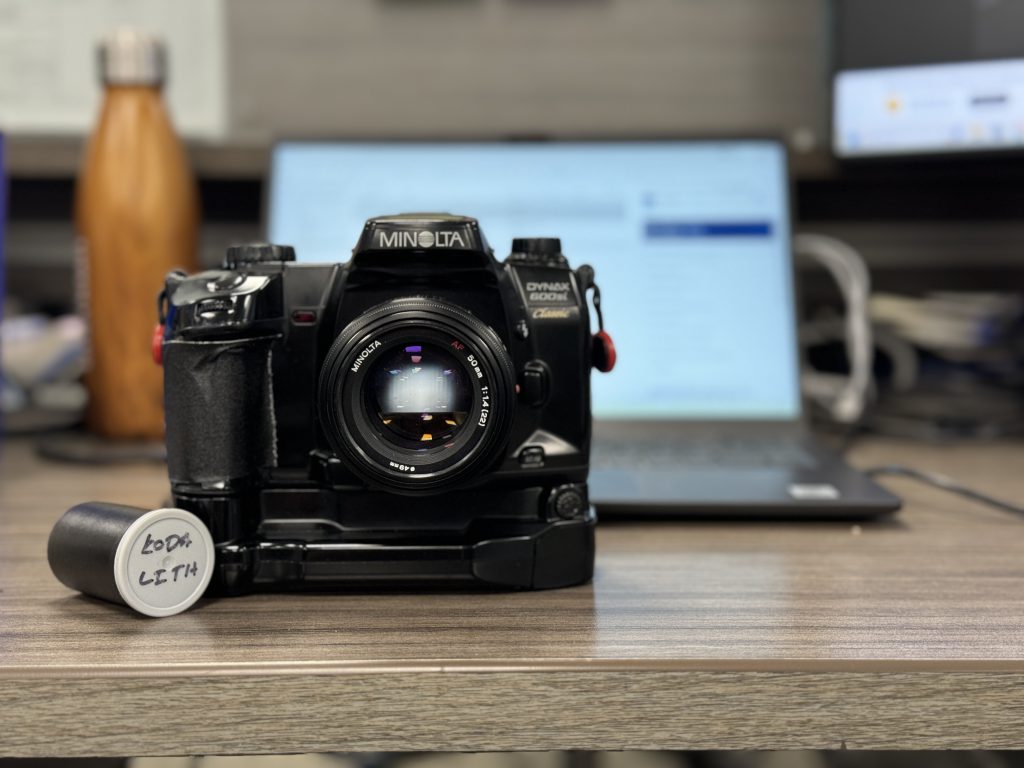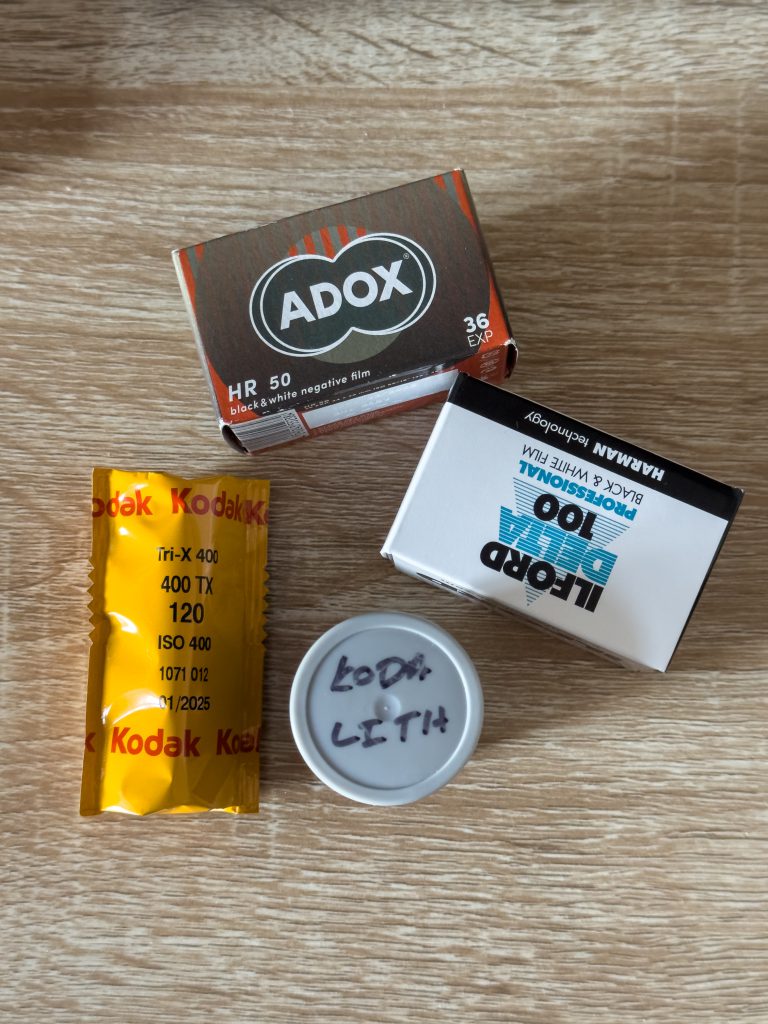While writing camera reviews remain a favourite of mine, second favourite is developers. Despite the challenges, it does allow me a bit more latitude in choices of films and gear. And while there are only a limited number of developers out there and some that are highly specialised or have limited film stocks that are available. But despite the limited numbers, there are in many cases a tonne of clones out there that allow me to fully explore these developers. I’ll be walking through how I write and work through reviewing film developers as I write my review of Flic Film MQ-19.

The main reason I enjoy working on developer reviews is that I don’t have to stick to a single camera or film stock. The idea is to show off what the developer can do with a wide range of film stocks. And as the camera can also influence how the film looks, I can pick as many different cameras as I want, almost total creative freedom. The one thing I try and do is get at least five rolls of different films into each review. Mixing up 120, 35mm and even 4×5 when possible. And of course adding filters, different speeds and dilutions to get a full picture of everything that a developer can do. That being said I do try and keep things as organised as possible, that means spreading the around cameras and film types. I try and get a representation of every brand and system that I have available. That means I try to include Canon, Minolta and Nikon, along with both metered and un-metered medium format cameras. I don’t always achieve this goal, and there are certainly more influence of my modern SLRs these days simply because they are easier to use especially when out travelling with family. I also try and split things up between traditional (cubic) and modern (t-grain) film along with fast and slow speeds. Again, this is all subject to the requirements of the service, because some developers have a limited use or times available.

One of the biggest problems with writing reviews of developers is finding times. Now in the case of more common developers like D-76, HC-110, and Rodinal is that there is a tonne of combinations with a wide range of film stocks. So in this case it’s a matter of picking the best films that can show off the developer in the best way. And with so many choices, it can be troublesome. In these cases I gear the film choices to the typical conditions that I would face during the time of year that I’m exposing the rolls. So in the winter I’ll stick to faster films, in the spring and fall it’s a mix between fast and mid-speed. While the summer months it’s mid-speed and slower films. Of course, if I’m then going to run a video review of the developer I’ll try and gear the time of year to something different from what I picked during the initial written review. In the case of developers that are designed for specific types of films, I’ll lean a majority of the stock choices to that type of film. Ilford DD-X and Kodak TMax Developer are designed for T-Grained films, so I went with TMax and Delta film choices, but also ensured that at least one or two rolls were traditional cubic grained films. Fomadon LQN and LQR only had Foma film stocks listed officially, so in those cases I was limited to having only Foma films, but they did have a couple of non-Foma films on the massive dev chart. The real trouble are the developers that are so limited that you maybe only have one or two films listed as working with it. I’m of course talking about RPX-D and Adox Adotec developers. These developers, while I would like to do a review of RPX-D, but I certainly won’t be doing a review of Adotec. Of course, there are also developers like FX-2, it sounded great on paper until I started to struggle finding those times and while I did manage to complete the review it was a pain in the butt the whole way through. There are two resources that I use beyond the listed datasheets that are provided by the manufacturer. And they are the Massive Dev Chart, an online database of film/developer combinations, and Flickr. In both cases they are a combination of user supplied information along with manufacturer information, the user supplied information is hit-and-miss sometimes, but it also is supplemented by my records and using my parallel processing method to fill in the gaps.

Online reviews these days tend to focus on cameras, lenses and films. In the realm of developers there isn’t too much online in regards to reviewing the chemistry. Most of these reviews are either few and far between or relegated to the annals of history and found in old print magazines when home developing was far more prevalent within the photography community. And that doesn’t mean that people don’t develop at home, there’s still a lot of off, most new photographers are much happier to send their film off to labs for development. Which makes writing these reviews both hard and easy at the same time and both for the same reason, because I have no real benchmarks in the online world to put myself against. The easy thing would be to get generative AI to write me a review on a developer in the style of blank. But as I mentioned in the first entry in this series, I despise the use of generative AI in the creative sphere, and the output it gives it far from human or creative. Like anything else related to photography you have a limited set of descriptors. So yes, I do have to stick to terms like grain, edge sharpness, contrast, and tonality when describing how the developer works. And thankfully some of the other data is readily available and I’ll admit I lift a lot of data directly off of the datasheets from the manufactures and even get a base of what film stocks to choose in the process. Which does help make writing these reviews a little easier especially the technical details surrounding mixing instructions, storage and shelf-life. The rest all comes from my personal observations and like my other reviews are more practical than scientific.




Like film stocks, there are plenty of rebadges and house brands of developers. But developer formulas are easily available online and many have been made that are designed to be produced by home chemists and major manufacturers. Take for example, Kodak D-76, while I haven’t made it myself but I have made Kodak D-23 at home and D-76 isn’t far of a stretch from D-23. Now if I only limited myself to reviewing one brand of D-76, that would limit the information available online. And some people can only find a single brand, or have had a poor experience with one brand. Plus it allows me to give the bigger picture of everything that a D-76 type developer can do. One particular trouble I face personally is that I’ve reviewed multiple developers multiple times. Now the obvious answer would be to go back to the original review and use the exact same films in the exact same way to show that the clone/other version of the developer is the same. That’s all well and good as a comparison post, I want to continue to show the vast wealth of film stocks available and what the developer does with those. Now D-76/HC-110/Rodinal is easy, but when you get the specialised ones, that’s where the problems start. Now I was dreading this with D-19, it has a short list of available combinations but in my review of MQ-19 I only repeated one roll of film, Delta 100, but I switched to 35mm instead of 120 from the original review.




As I said in the beginning there is not much online in the way of developer reviews, so if there is one niche of reviews that I can attest to it is my developer reviews. Now I’m in no way saying that I’m the only one, there are plenty of other developer reviews here online in the blog and vlog spaces. So far I have written fifty-one such reviews and I have some interesting ones planned for next year, including revisiting two developers I have reviewed in the past and another release from Flic Film. And if even possible, another surprise one that I can’t go into any further. If you want to read through all my reviews that I’ve published you can see them all here: alexluyckx.com/blog/developer-review-index
Thank you for sharing insight into your process! As someone who is just starting to develop black and white film after developing C41 for a bit over a year, your reviews have been an absolutely invaluable source of information to me. As you said, developer reviews are less common than camera/film reviews these days, and while I’ve learned quite a lot from older books, it’s also really helpful to see your reviews with a variety of film stocks.